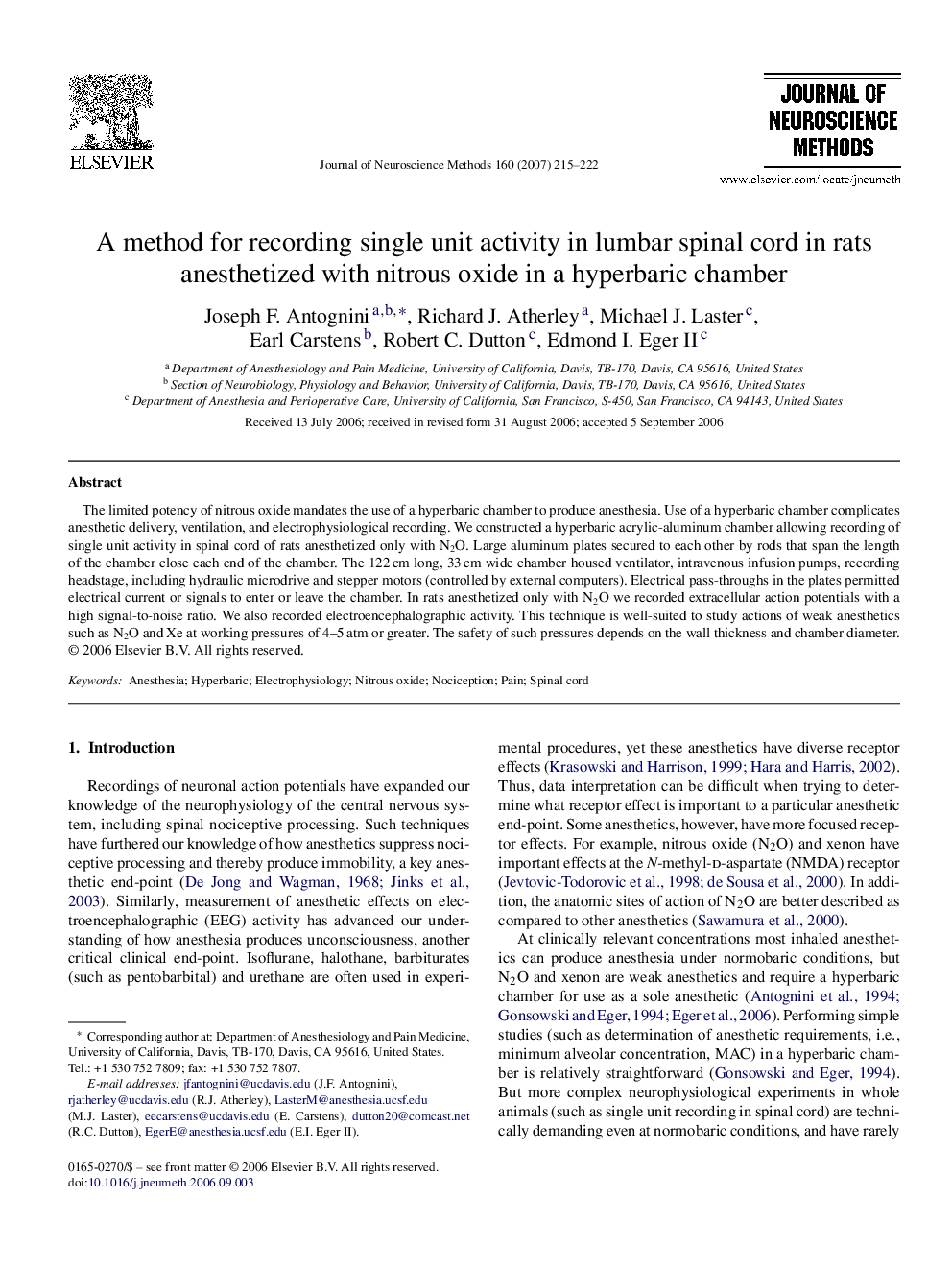| Article ID | Journal | Published Year | Pages | File Type |
|---|---|---|---|---|
| 6270526 | Journal of Neuroscience Methods | 2007 | 8 Pages |
Abstract
The limited potency of nitrous oxide mandates the use of a hyperbaric chamber to produce anesthesia. Use of a hyperbaric chamber complicates anesthetic delivery, ventilation, and electrophysiological recording. We constructed a hyperbaric acrylic-aluminum chamber allowing recording of single unit activity in spinal cord of rats anesthetized only with N2O. Large aluminum plates secured to each other by rods that span the length of the chamber close each end of the chamber. The 122Â cm long, 33Â cm wide chamber housed ventilator, intravenous infusion pumps, recording headstage, including hydraulic microdrive and stepper motors (controlled by external computers). Electrical pass-throughs in the plates permitted electrical current or signals to enter or leave the chamber. In rats anesthetized only with N2O we recorded extracellular action potentials with a high signal-to-noise ratio. We also recorded electroencephalographic activity. This technique is well-suited to study actions of weak anesthetics such as N2O and Xe at working pressures of 4-5Â atm or greater. The safety of such pressures depends on the wall thickness and chamber diameter.
Related Topics
Life Sciences
Neuroscience
Neuroscience (General)
Authors
Joseph F. Antognini, Richard J. Atherley, Michael J. Laster, Earl Carstens, Robert C. Dutton, Edmond I. II,
